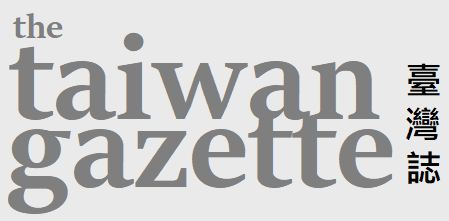Exploring the Intersections of Art, Identity, and Indigeneity in Taiwan's Cultural Landscape with Dr. Sophie McIntyre
Written by Lorraine Pan
Edited by the Taiwan Gazette
Cover photo by Lorraine Pan
Speaker Bio:
Dr. Sophie McIntyre is a Senior Lecturer at Queensland University of Technology, Australia. She is also an established curator specialising in art from the Asia-Pacific region, especially from Taiwan, Hong Kong, Australia and Aotearoa/New Zealand. She is the author of Imagining Taiwan: the Role of Art in Taiwan's Quest for Identity (Brill, 2018), and Yao Jui-chung (姚瑞中) (Scheidegger & Spiess, 2023), and regularly contributes to journals, books, anthologies and exhibition catalogues internationally. In addition, she has curated more than 30 exhibitions, including several featuring Taiwan art; and received awards and grants for her academic and curatorial projects.
Dr. McIntyre is a Project Lead on an award-winning First Nations arts exchange program (2021-). This initiative connects artists, curators, film makers and scholars from Australia, Taiwan, and Aotearoa/New Zealand through a comprehensive program that includes a symposium, publications, field trips, artist residencies, a documentary film, and touring exhibition.
On 14 April 2025, sponsored by the Global Taiwan Studies Initiative at the Asian Institute and the Munk School of Global Affairs & Public Policy, Dr Sophie McIntyre from Queensland University of Technology gave a presentation titled ‘Exploring the Intersections of Art, Identity, and Indigeneity in Taiwan's Cultural Landscape’.
Dr. McIntyre began with her book Imagining Taiwan, discussing her research on museums and exhibitions in Taiwan from 1987 to 2010. She also introduced her project on the works of Yao Jui-chung, analysing how his art critically responds to the issue of Taiwanese identity.
Dr. McIntyre noted Taiwan’s unique and unrecognised international status, with art and museum exhibitions serving as tools of cultural diplomacy to represent the nation. Since the 1990s, she has conducted over 100 interviews in Taiwan and visited artist studios and exhibitions to collect firsthand materials. She encountered many challenges, such as the lack of English-language literature, the political sensitivity of the name ‘Taiwan’, and her position as a non-Taiwanese researcher.
The 1990s marked a turning point: after the lifting of martial law in 1987, freedom of expression expanded. In 1996, Lee Teng-hui was elected President, and the Third Taiwan Strait Crisis occurred. Art began to focus on local history and identity. On one hand, the government used visual art as a diplomatic tool. On the other hand, individual Taiwanese artists used art to express national or cultural identity.
Dr. McIntyre mentioned that naming itself is political. Last year, Taiwanese baseball player Chen Chieh-hsien expressing identification with ‘Team Taiwan’. She introduced works by Yao Jui-chung and Yang Maolin, which deal with historical memory, local culture, and critique of colonial history, aiming to redefine identity. For example, Yang’s Made in Taiwan demonstrates Taiwanese people’s recognition of their own ‘Taiwan’ identity. Other artists, like Mei Dean-E, explore political and cultural relations between Taiwan, China, Japan, and others. There are also female artists like Mali Wu who engage national identity from a gender perspective.
Dr. McIntyre presented a series of Taiwanese Indigenous artists such as Rahic Talif, Walis LaBai, and Yuma Taru, and introduced the Shung Ye Museum of Formosan Aborigines, which focuses on Indigenous culture. Taiwanese Indigenous peoples not only construct identity locally but also engage in transnational collaboration with Indigenous artists in Australia and New Zealand.
Since Taiwan’s withdrawal from the UN in 1971, the country has expanded its international visibility through art. Exhibitions and art exports showcase achievements and act as cultural diplomacy. However, the ambiguity of Taiwan’s identity makes curatorial work politically sensitive, especially how Taiwan is labelled in international exhibitions. Dr McIntyre stated that factors such as a multilingual society, colonial history, and diplomatic status make Taiwanese identity complex. Art is a key medium for reflecting and constructing identity, demonstrating cultural diversity and autonomy.
In the Q&A session, Dr. McIntyre was asked if her research covered earlier museum history in Taiwan, such as during the period of the Transitional Justice Commission. Topics included how museums on the 228 Massacre, White Terror, and Cold War reflect traces of different regimes. She cited her collaboration with the National Prehistory Museum to explain Taiwan’s connection with Austronesians and how the names of buildings and institutions evolve with history.
She also shared her considerations in selecting artists. For example, she had worked with Judy, an Australian Indigenous artist who participated in an exhibition at the Taipei Fine Art Museum in 1994, as well as artists like Robert Andrew and Leah King Smith, who are open-minded. In 2023, she collaborated with Vernon, whose Chinese background created cross-cultural possibilities. For English speakers, living in non-English-speaking communities is challenging, but she had a strong coordinator who facilitated the exhibitions.
Dr. McIntyre was also asked about some Taiwanese Indigenous artists rejecting the category of ‘Austronesian art’, and whether it relates to domestic political stances. She responded that it is not driven by party politics. Artists like Rates oppose the term as a Western anthropological concept, unrelated to art. More senior artists like Rates prioritise commitments to their own communities over international recognition.
The final question concerned the English translation of Yao Jui-chung’s work title Recover Mainland China. The Chinese title carries political implications, while the English version is more ambiguous. Dr. McIntyre responded that she respects artists' choices of spelling for titles in both publications and talks. Yao, skilled in political satire, chose ‘Recover Mainland China’ as a strategy for addressing an international audience. Many Taiwanese artists deliberately differentiate Chinese and English titles to reduce diplomatic sensitivity. This reflects the politics of representation that museums and art institutions must consider when handling political works.
Through research on Taiwanese Indigenous culture, art, and museum exhibitions, Dr. McIntyre demonstrated a transnational and cross-cultural exchange between Australia and Taiwan, offering new possibilities for future intercultural studies.







